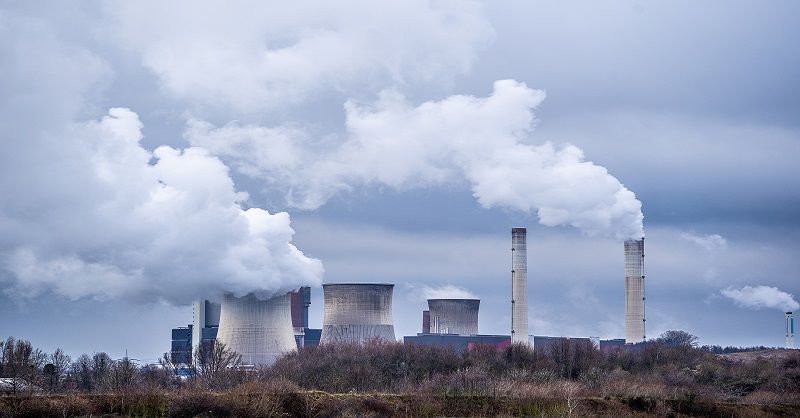High Absenteeism Rates
When children get exposed to pollutants in the environment, this will result in long-term health issues. In addition, the microscopic particles from smoke or other related fumes cause eye irritation in most students.
It happens mostly in academic institutions that are besides busy earthen or gravel roads. The irritation is a major cause of students’ low concentration in a class, as they try to cover their eyes when such an event occurs. Eventually, students in these areas will perform poorly as they waste time on non-academic challenges.
Foul smells from nearby industries also cause lung irritation, which leads to frequent coughing by the students. It’s very hard for you to concentrate when you have irritation, especially in your breathing system. Moreover, as these toxic chemicals accumulate in their lungs, most of them get carcinogenic infections. Thus, making it impossible for them to continue school regularly.
The location of the school can also increase their chances of getting exposed. In terms of location, academic institutions located near industries are highly affected compared to all other areas. Sometimes, in a rare situation, you might find a school located in an environment rich in natural gas like methane. These natural resources tend to be beneficial to members of the surroundings if used wisely.
Traces of carbon from these gases will trigger low oxygen absorption, as haemoglobin has a higher carbon affinity than oxygen. In such scenarios, you will find almost three-quarters of the class dozing off or lacking mental abilities to capture complex concepts. The natural appearance of these students is also affected as, in most cases, they suffer from low oxygen concentration in their body tissues.
Issues with Growth and Development
Children are more vulnerable compared to adults when it comes to the effects of pollution. Their exposure to pollutants in the environment during the important stages of their physiological development can result in long-term health issues. In children, the functions of the lungs are not fully developed yet. This means that they breathe in higher levels of polluted air relative to their weight. They also spend more time outdoors where air pollution levels are high.
Spending a lot of time outside will lead to dust accumulations in their ears, and if not well cleaned, the toxic substances may spread to a sensitive part of the ear leading to hearing problems. This will cause a lot of strain to them as they struggle to hear what is being taught, and in the end, some will get frustrated and quit or accept the condition.
Because of the metabolic differences, respiratory rates, and mouthing behaviour, children get exposed to higher levels of arsenic, pesticides, lead, and other pollutants. Most of the metabolic activities of the body depend on plenty of oxygen for respiration. Having a low metabolic rate amongst students will lower their mental capabilities as most of the time, the students will appear tired and slow in their operations.
Children also cannot choose where they will live or go to school. Brain formation in the early years of a child’s life is very important. Based on research, children exposed to air pollution perform poorly on tests of cognitive functioning. They also have lower IQ scores and impaired neurological function compared to other children.
Professional Help to Improve Performance
Students in college also learn about air pollution in school. A student needs to deal with this environmental issue while trying to complete their education. However, the health effects of air pollution can adversely impact the student’s ability to study well. In addition, learning how trees reduce pollution by trapping traces of pollutants on their leaf surfaces will encourage them to plant more trees, countering the effects of dust particles. Learn more about air pollution, you can encourage them to read free environmental pollution essays on GradesFixer.
Detrimental Effects on Performance
While many studies concentrate on the dangers of air pollution in diseases that impact the cardiovascular and respiratory systems, fewer studies have focused on the effects of air pollution on cognitive health. For example, studies have proven the link between academic performance and air pollution. But researchers have found new evidence concerning the effects of pollutants on neurological function and health.
Breathing poor quality air can have detrimental and significant effects on children, adversely affecting their ability to learn. Based on research findings, it’s important to ensure good quality air in schools. The school stakeholders should ensure the school is sprinkled with water to prevent air pollution due to dust particles.
In addition, air purifiers should be provided in class if there are students with asthmatic conditions to help them breathe effortlessly, not forgetting to avail first aid facilities for students who may have breathing complications. That way, children won’t get deprived of the best education they deserve. Researchers also found that the ability of teachers to teach effectively can also get affected by air pollution.
The psychological development of children is uniquely vulnerable to harm when they get exposed to environmental toxins. Further evidence also suggests that the effects of air pollutants can happen at very early ages. For example, children who had excessive prenatal exposure to aromatic hydrocarbons have lower IQ ratings than those who had no such exposure when they reach five years of age.
Pollutants Inside the School can Affect Students too
Imagine being in an exam room, and you have to keep on wiping your writing sheets to clear dust particles that may have settled on them! It’s a rare occasion that is not far from happening in air polluted areas.
Sometimes, strong winds may carry a lot of these dust particles into the classrooms through the window, causing many distractions. The physical environment plays a significant role in the academic performance of children. Pollutants in the air can trigger a host of health issues, including allergies and asthma, increasing absenteeism while reducing academic performance.
The quality of the environment of a school can improve academic performance. Not just of the students but also of the teachers in terms of productivity. Although controlling outdoor pollution in schools can be very difficult. You can still make a significant impact and difference if you can control the indoor environment. Make sure that the air quality in the school is very clean.
Create an indoor environmental quality (IEQ) team to handle this. There are many tools you can find online to establish this team. Work with other teachers, the school’s administrators, and the parents too.
Together, you can take the necessary steps to improve the school’s cleaning program. That should focus on health and improve the school building’s ventilation. Work with your community to ensure solid guidelines will limit the exposures, especially in highly polluted environments.
Speak up about your concerns to educate the teachers, principal, school board members, and anyone else who will listen to you. Talk about how air pollution can affect the health of children and everyone in the school.
Related:
1. Why is Transformational Leadership Important in Healthcare?
2. The Importance of Effective Communication Skills in Healthcare
3. 10 Best Ways to Look After Your Mental Health
4. The Importance of Health and Wellness Training
5. An Ultimate Guide to Confidentiality in Health and Social Care
Conclusion
Air pollution has become an issue that the world has to confront and deal with right away. The effects of poor air quality can affect students both mentally and physically, which will deprive them of the good education they deserve. If no solution is offered to provide a conducive environment for the learners affected, the so-called “bright future” might just become futile dreams.


![]() 8 minutes
8 minutes

































